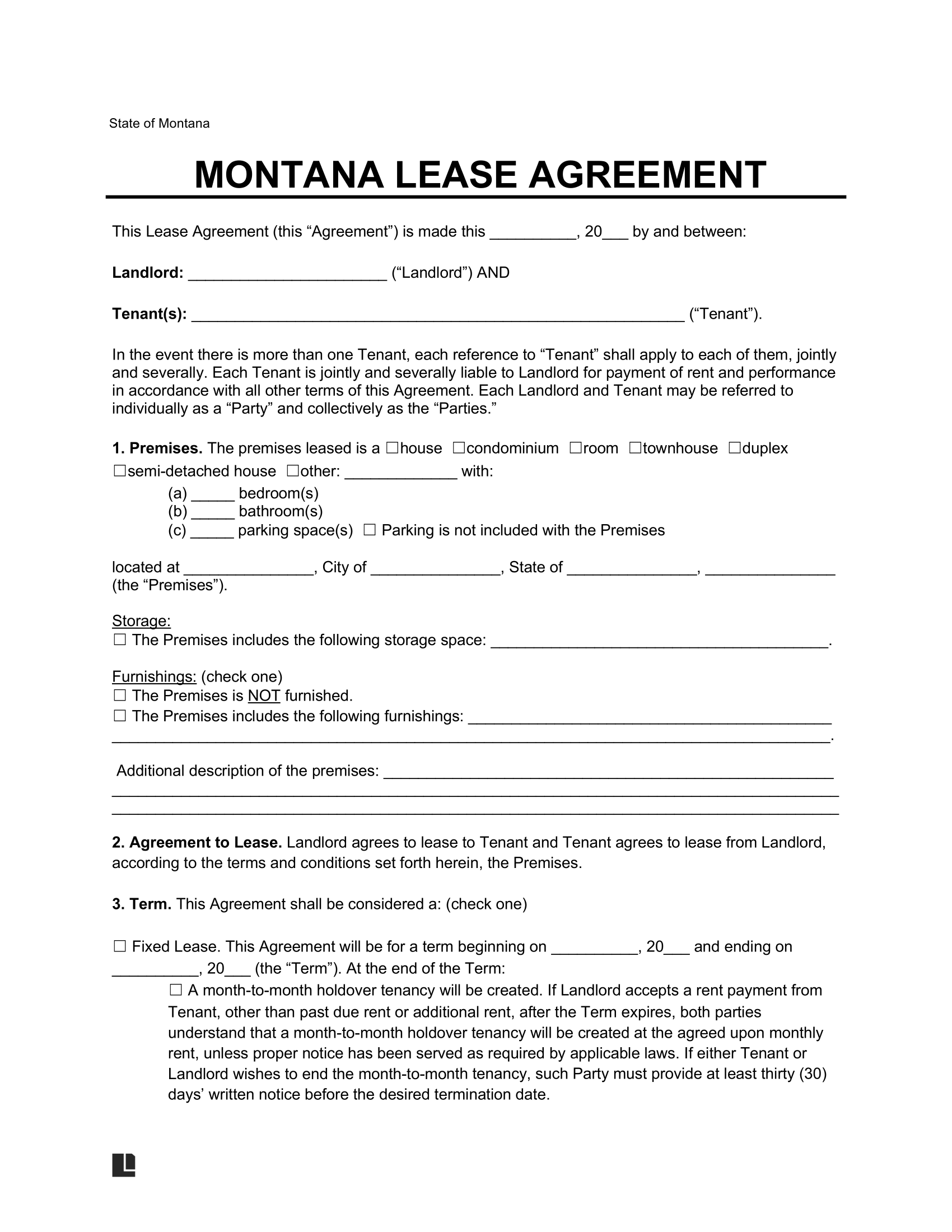A Montana standard residential lease agreement is a legally binding contract between a landlord and tenant. Before signing the lease, the landlord usually requires the tenant to complete a rental application and credit check.
The lease agreement sets out the terms of the rental relationship, including payment due dates, lease length, termination options, utilities responsibility, and fees. If a security deposit or pet deposit is required, these details will also be included in the agreement.
Once both parties have signed the lease, they are bound by its terms and conditions, which clearly define their rights, responsibilities, and obligations.
Lease Length Considerations
- The rental agreement specifies the length of the tenancy, which is week to week for roomers who pay weekly rent and month to month otherwise. [1]
- The maximum duration of a standard residential lease in Montana is one year, and longer leases require both landlord and tenant signatures to be valid. [2]
Required Disclosures
- Move-in checklist.
- Lead-based paint.
- Methamphetamine production.
- Mold presence.
- Manager contact information.
For more detailed information on required disclosures and state laws, visit our Montana lease agreement page.
Security Deposit
- Maximum Amount ($): No state-imposed limit
- Returning to Tenant: Within 30 days if the landlord deducts for damages; 10 days if no deductions were made. [3]
Rent Payment
- Grace Period: None for the payment of rent before charging a late fee. [1]
- Maximum Late Fee: No limits.
- NSF Fee: $30.
Landlord Resources
- Landlord-Tenant Laws – Title 70, Chapter 24 (Residential Landlord and Tenant Act of 1977)
- Handbook – Montana Landlords’ Rights & Duties Handbook (PDF)
Related Forms
Rental Application
Evaluate whether a subtenant meets your subletting criteria for the property.

